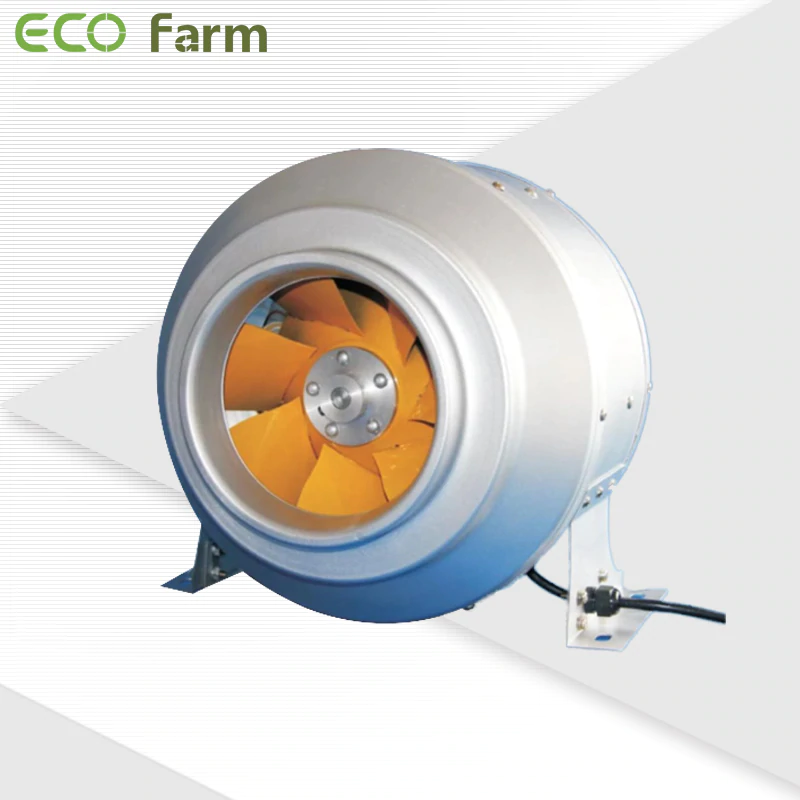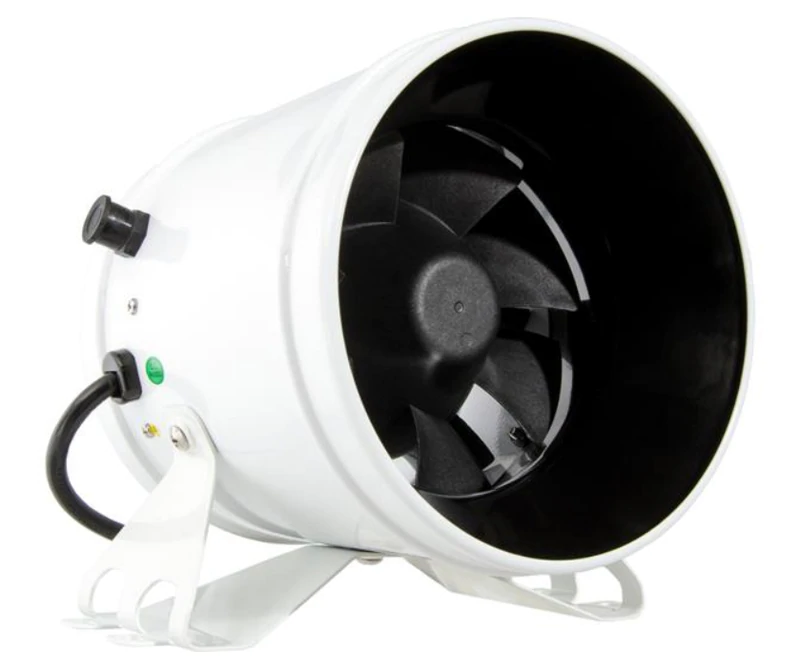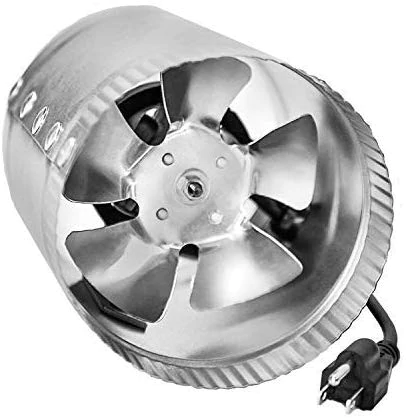- Home
-
SHOP ECO FARM
- ECO Farm Grow Lights
- ECO Farm LED Grow Lights
- ECO Farm Quantum Board
- ECO Farm Samsung LED Grow Lights
- ECO Farm COB Grow Lights
- ECO Farm Commercial Lights
- ECO Farm Supplemental Grow Light
- ECO Farm Fluorescent grow lights
- ECO Farm HPS & MH Grow Lights
- ECO Farm CMH Grow Lights
- ECO Farm HID/CMH Bulbs & Ballasts
- ECO Farm Grow Tents & Kits
- ECO Farm 2x2ft Grow Kits
- ECO Farm 3x3ft Grow Kits
- ECO Farm 3.3x3.3ft Grow Kits
- ECO Farm 4x4ft Grow Kits
- ECO Farm 5x5ft Grow Kits
- ECO Farm Grow Tent - Standard Style
- ECO Farm Grow Tent - Extension & Roof & Lodge Style
- ECO Farm Extraction & Harvest
- ECO Farm Rosin Press Machine
- ECO Farm Dry & Wet Trimmers
- ECO Farm Oil Accessories
- ECO Farm Medicinal Plants Grinder
- ECO Farm Medicinal Plants Containers
- ECO Farm Medicinal Plants Dryer
- ECO Farm Refrigeration Dryer
- ECO Farm Climate Control & Other Accessories
- ECO Farm Inline Duct Fans
- ECO Farm Oscillating Fans
- ECO Farm Exhaust Fans
- ECO Farm Air Filter
- ECO Farm Duct Muffler
- ECO Farm Ventilation Kits
- ECO Farm Plant Humidifiers
- ECO Farm Plant Dehumidifiers
- ECO Farm Hydroponic Accessories
- ECO Farm Other Accessories
- ECO Farm Hydroponics Microscopes
-
TOP BRANDS
- Grow Lights Brands
- Adjust-A-Wing
- Apollo Horticulture
- Bestva
- Black Dog LED
- California Lightworks
- ChilLED Grow Light
- Eco Farm
- HLG - Horticulture Lighting Group
- Kingled
- Kind LED
- Mars Hydro
- Morsen
- Neilo
- NextLight
- Phlizon
- PlatinumLed
- Roleadro
- Optic LED Grow Lights
- ViparSpectra
- Vivosun
- EYE Hortilux
- IPOWER
- NanoLux
- Phantom grow light
- Gavita grow lights
- Grower's Choice
- Lumatek
- Maxibright
- Yearld Pro
- ThinkGrow
- Crecer Lighting
- Green Sunshine Electric Sky
- fohse aries
- loriflux
- luxx
- fluence
- iluminar
- Lex
- LTC
- Rayonled
- FGI
- PHOTONTEK
- Grow Tents & Kits Brands
- Apollo Horticulture
- Black Box
- CoolGrows
- Eco Farm
- GrowLab
- Gorilla Grow Tents
- Mars Hydro
- Quictent
- Secret Jardin
- Unit Farm
- TopoGrow
- VIVOSUN
- Topolite
-
COMPANY INFO
-
COOPERATE WITH US
- Blog
Best Fans For Grow Tents (Reviews)-2022 Updated
November 12, 2022
If you are new to growing plants indoors or are trying to grow plants without success, this article is for you. Proper air circulation in the indoor grow room is a critical part of the method. With poor circulation, your plants may be stunted, your shoots will be brittle and won’t be able to withstand heavy buds, and you may find yourself with mold or bug problems. All of these problems can be solved with a properly sized fan.
Use an indoor grow fan
Sometimes fans can even harm your indoor plants, so you’ll want to keep a few things in mind before turning them on. You have to set your fan strong enough to cause a slight rustling, but not too strong. If it’s too strong, your plant may overbend and find itself snapped or damaged. Additionally, it causes their substrates to dry out faster, stressing the plants and affecting their growth.
During bloom, if you set the fan too strong, you may find yourself damaging the plant’s blooms due to constant movement. This causes them to brush past each other; in turn, this can lead to a dramatic increase in the chances of fungal and bacterial infections.

Features:
This ECO Farm inline duct fan is used in indoor grow facilities and vertical farms, heating and cooling transfer, commercial drying and air filtration applications. Inline blowers can also create a negative pressure environment, simulate wind, exhaust odors and fumes, and draw in fresh air from outside. The blower provides an airflow rate of 2120 CFM using 550 watts at maximum speed. The fans don’t “purge” at lower speeds or waste power. The fans give you unique control flexibility without background noise or hum at low speeds. Coated steel housing prevents rust and protects the motor and blade from accidental damage and harsh elements to reduce maintenance in demanding applications.

Features:
Controlled by a 32-bit microprocessor, these powerful mixed-flow digital fans deliver outstanding performance and value. Available in 4", 6", 8" and 10" models, Jetfans is the ideal solution for your ventilation needs. Because the motors in these fans are EC (electronically controlled), they offer very high efficiency, reliability and controllability. They include a highly precise speed control unit that can be detached from the fan and power cord if desired. Low power consumption — Jetfans run only 25% of the power of comparable inline fans Their EC motors are efficient, reliable and responsive to speed control ETL certified
iPower Booster Fan Inline Duct Vent Blower

Features:
Portable and lightweight, this iPower in-line duct fan can be installed anywhere because it features an extra-long 5.5' grounded power cord inside. The maximum ambient temperature is 60°C / 140°F. The advantages of fans are that they can deliver large amounts of air quickly and efficiently; temperature control — cooling chambers that tend to accumulate excess heat. If any other substances/particles get into the ducted fan and jam the blades, the user should immediately turn off the power, clean it up, and turn the power back on after proper disposal.
Grow Tent Fan Buying Guide
If you are not completely sure what type of fan you need and what features are important, this buying guide will clear some things up. We’ll begin with a rundown of the different types of fans.
Different Types of Fans
There are 3 basic types of fans typically used for gardening applications:
Inline fans
Oscillating fans
Static fans
Each type of fan is used for a specific purpose. Most serious growers will need all 3 types for a successful operation.
In addition to having humidity control and temperature control via a central A/C unit or a window mount or portable unit, having airflow is necessary for reasons discussed earlier.
It is not enough to just control temperature and humidity. And each type of fan will aid you in a different way.
Inline Fans
These are fans that are typically installed within a duct system or used as exhaust fans blowing directly outside. They are not always equipped with sensors or on/off switches but many of the higher end models are.
They are called inline, because they are used in line with the ducts, as an integral part of the ventilation system, as opposed to a free standing fan that blows air all around the room.
A serious grow tent will need at least 2 inline fans, one for intake and one for exhaust. Some larger operations will have several inline fans to do the job. Smaller tents usually just have an exhaust fan.
Oscillating Fans
Oscillators are fans that serve to move air around inside the tent, or room. Where inline fans are used in a closed system to bring in air from outside or push air from inside to the outside, oscillating fans keep the internal air from getting stale.
They also serve the important role of agitating your plants, serving as artificial wind inside your closed system. Plants need to be moved around by natural forces to help them stay healthy, and since you have no wind inside, the oscillating fans are taking the place of natural wind.
This type of fan is also good for keeping the temperature even throughout a large area. In any room, especially one with grow lights and other heat sources, hot spots will quickly emerge.
Near the lights it may be several degrees hotter than elsewhere in the tent. Moving the air from one place to another will keep ambient temperatures more uniform in your space. The moving air also serves to dry the plants, which prevents mold from forming.
Static Fans
These are the basic fans you see everywhere. They do not oscillate or move. They can either sit on the floor or be clipped on to structures, but static fans are stationary.
Static fans are used in situations where you need to constantly move air in a specific area of the room, and you want the airflow to stay on the same spot over time.
A great example of when you need a static fan would be if you had a section where several lights were in one spot. A static fan could cool the surface temp of the lights as well as drop the temp in the immediate area, before the oscillating fans move the air out of the area.
Fan Size
The bigger the fan the more air it will move. This is a simple concept which makes it easy to choose your fan size.
Of course, that is not always the only concern, considering many of us are working within finite space constraints. If you had a massive warehouse, you would simply buy as many of the biggest fans as you could afford and move as much air as possible.
Inline
Inline fans come in many sizes. The most common sizes you will see in grow tents are 4″ and 6″, with the occasional 8 or 12″ fan. They do get even bigger but once you get over 8″, you are getting into some heavy duty large spaces, not the normal grow tent situation.
Oscillating
Oscillating fans come in many sizes as well, but most situations require a 12″ fan or larger, which are the most common sizes. Chances are good that if you have a normal grow tent you will be looking for a small oscillating fan for grow tent use of around 12 inches in size. These can move a lot of air and do not take up too much space.
Static
Static fans can be found in the same sizes as oscillating fans. Most common for our application are the clip on 8″ or standard floor fans. Most box fans that sit on the floor are about 20″. You can choose the size you need based on your specific situation.
Budget
Because fans are so important, it makes sense to buy the best ones you can with the money you have. Since they are generally not that expensive you can get a significantly better fan for only a few dollars more in most cases.
You want a fan that will last a long time and move a lot of air. You usually want it to do so with a minimum amount of noise, too.
There are many poorly made fans you can get for extremely cheap, so be careful! If you stick to the fans we have highlighted here, you will be sure to get a quality unit at a fair price.
Conclusion
Inline fans are a great way to improve air circulation in your grow room and avoid problems like mold growth, hot spots, and pest infestations. If you want to improve air circulation in your grow room, an inline fan is a good choice.
Leave a comment
Also in News

What are the best LED grow lights to use in a grow tent?
June 27, 2024
When choosing Best LED Grow Lights, you should also consider the durability of the lamp, energy efficiency and whether it can meet the light needs of specific plants. For example, the LED plant growth lights provided by Philips Lighting are designed for specific crops to promote uniform growth and improve quality and yield.

Can I use normal led lights to grow plants indoors?
June 20, 2024

What's the best indoor LED growing light on Amazon USA?
June 15, 2024
On Amazon, hot growth light types include LED Growing Lights, which have a variety of functions and features such as automatic on/off timing, red and blue LED light combinations, multiple dimmable modes, and flexibility for indoor potted plants or indoor gardens.
